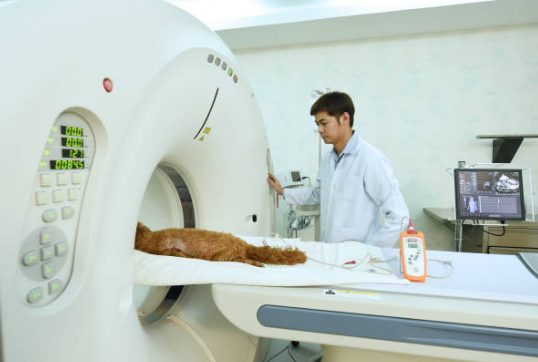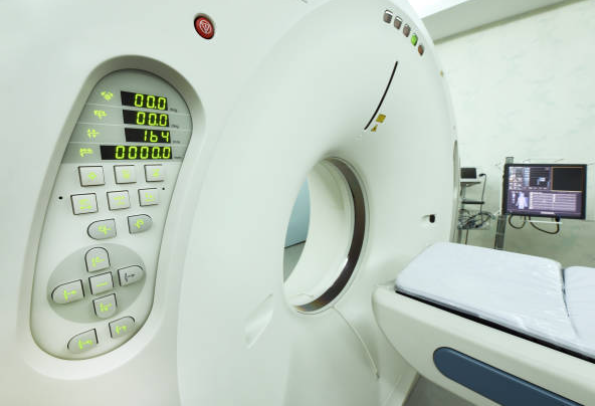How Much Does A Pet Scan Cost With Insurance?
When it comes to medical procedures like a pet scan, understanding the pet scan costs involved is crucial for making informed decisions about your healthcare. In this comprehensive guide, we’ll delve deep into the intricacies of the cost of a pet scan with various types of insurance, explore potential additional expenses you might encounter, and emphasize why it’s essential to discuss these matters with your doctor. Additionally, for those seeking financial assistance with healthcare expenses, we’ll also touch on programs that offer support, including information on free pet insurance, to ensure your pet’s health is taken care of without straining your budget.
Cost Of PET Scan With Different Types Of Insurance
PET scans, short for Positron Emission Tomography, are invaluable tools for diagnosing various medical conditions, including cancer, heart disease, and neurological disorders.

However, the Pet Scan Cost can vary significantly depending on the type of insurance you have.
Medicare Coverage For PET Scan
For those eligible for Medicare, there’s reassuring news – this federal program typically covers PET scans when they are deemed medically necessary.
However, the specifics of your coverage and the potential out-of-pocket expenses can vary depending on your specific plan.
It’s vital to reach out to your Medicare provider for a comprehensive understanding of your coverage. Medicare is a program that primarily serves individuals aged 65 and older, as well as some younger individuals with disabilities.
It is divided into several parts, with Part A covering hospital care, Part B covering outpatient services, and Part D covering prescription drugs.
While Parts A and B might cover some aspects of your PET scan, it’s important to know that Part D often covers prescription medications related to your treatment.
Medicaid Coverage For PET Scan
Medicaid, designed to assist individuals and families with low incomes, often covers PET scans when they are medically necessary.
Nevertheless, Medicaid plans differ from state to state, so it’s imperative to inquire about coverage specifics with your Medicaid provider.
They can provide you with the exact details you need to make an informed decision. Medicaid, unlike Medicare, is a joint federal and state program.
Eligibility and coverage can vary greatly depending on your state of residence. To determine if you qualify for Medicaid coverage for a PET scan, it’s essential to contact your state’s Medicaid office and discuss your specific situation.
They can guide you through the application process and inform you about the coverage available in your state.
Private Insurance Coverage For PET Scan
When it comes to private insurance plans, there’s a wide range of coverage options for PET scans. Some plans may generously cover the entire Pet Scan Cost, while others may require you to pay a deductible, copay, or coinsurance.
To understand where your plan falls on this spectrum, it’s best to get in touch with your insurance provider directly.
They can provide you with the most accurate information regarding your specific policy. Private insurance can be obtained through your employer, purchased independently, or obtained through government exchanges, depending on your circumstances.
It’s important to carefully review your policy documents, including the terms and conditions, to understand how PET scans are covered and what you might be responsible for paying out of pocket.
Potential Additional Costs
While insurance coverage plays a pivotal role in determining the Pet Scan Cost, it is crucial to consider additional potential expenses associated with the procedure.

Beyond insurance, individuals may encounter supplementary costs related to pre-scan preparations, such as specific dietary restrictions and preparatory medications.
Ancillary services like contrast agents or radiopharmaceuticals used during the scan, which enhance visibility, may incur additional charges.
Post-scan follow-ups, consultations, and subsequent diagnostic procedures also contribute to overall expenses.
Cost Of Pre-Scan Procedures
Before undergoing a PET scan, there are preparatory procedures that you’ll need to follow, which may include fasting or avoiding certain medications.
It’s crucial to understand that these preparatory steps might involve additional Pet Scan Costs, such as prescription copays or the purchase of over-the-counter supplies.
Discussing these potential expenses with your healthcare provider in advance will help you plan accordingly.
Additionally, there might be specific dietary restrictions or requirements leading up to the PET scan. Your healthcare provider will provide you with detailed instructions to ensure the accuracy of the scan.
Any associated pet scan cost with dietary adjustments should also be considered when budgeting for your PET scan.
Cost Of Post-Scan Follow-Up Appointments
After the PET scan, you may need follow-up appointments to discuss the results and determine the next steps in your treatment plan.
These appointments could result in additional copays or fees, depending on your insurance coverage. Ensuring you’re aware of these pet scan cost upfront can prevent any surprises down the road.
Follow-up appointments are a crucial part of the PET scan process. They allow your healthcare provider to interpret the scan results and work with you to develop a treatment plan if necessary.
It’s essential to attend these appointments to receive the full benefit of the PET scan. Discussing potential costs associated with follow-up visits with your healthcare provider can help you plan for these expenses effectively.
Additional Articles: What Does Boarding Fees Mean On Pet Insurance?
Cost Of Transportation And Accommodations
If the facility where you’ll be getting your PET scan is not conveniently located, you’ll need to factor in transportation costs.
This may encompass expenses like gas, public transportation fares, or even overnight accommodations if the location is far from your home.
Planning ahead and budgeting for these expenses is essential to avoid any unexpected financial strain. Additionally, consider whether you’ll need assistance with transportation.
If you are unable to drive or need specialized transportation due to a medical condition, there may be additional costs associated with arranging for transportation to and from the PET scan facility.
It’s a good idea to explore all your transportation options, including family and friends who may be able to help.
Importance Of Discussing Costs With Your Doctor
Understanding the financial aspect of your PET scan is crucial, and your healthcare provider can offer valuable guidance on navigating pet scan costs.

Beyond procedure expenses, they can clarify insurance coverage, discuss potential additional pet scan cost, and provide information on financial assistance or payment plans.
Open communication with your healthcare team ensures informed decision-making, addressing both direct and ancillary expenses associated with the PET scan.
Engage with your provider to gain a comprehensive understanding and explore available support options for a well-informed and financially manageable healthcare experience.
Communicating With Your Doctor About Insurance Coverage
Before scheduling a PET scan, engage in an open and honest conversation with your doctor about your insurance coverage.
They can offer guidance on finding in-network facilities that can help reduce your out-of-pocket expenses.
Your doctor’s insights can prove instrumental in making the right choices for your healthcare. Additionally, your healthcare provider may have relationships with specific diagnostic centers or facilities that offer lower costs for PET scans.
By discussing your insurance coverage with them, you may discover options that can help minimize your expenses.
Discussing Potential Additional Costs
Your healthcare provider can also inform you about any potential additional costs associated with the PET scan and its related procedures.
Armed with this knowledge, you’ll be better equipped to make informed decisions about your treatment plan.
This transparency in communication ensures that you’re not caught off guard by any unexpected expenses.
Furthermore, your doctor can help you prioritize which preparatory procedures or follow-up appointments are absolutely necessary based on your medical condition.
They can provide guidance on which aspects of the process you might be able to adjust or optimize to reduce costs without compromising your health.
Exploring Alternative Options If Cost Is a Concern
If the cost of a PET scan is a significant concern for you, don’t hesitate to discuss alternative diagnostic options with your doctor.
They can recommend less expensive imaging tests or alternative methods of diagnosis that may be equally effective for your specific medical condition.
This collaborative approach between you and your healthcare provider ensures that your health and financial well-being are both considered.
Your healthcare provider has extensive knowledge and experience in diagnosing and treating medical conditions.
They can help you understand the pros and cons of various diagnostic tests, including their costs, to make an informed decision that aligns with your healthcare needs and budget.
Related Topics: How To File A Claim With Lemonade Pet Insurance?
Conclusion
In summary, understanding your insurance coverage, discussing costs with your doctor, and planning for potential expenses are essential steps in managing the pet scan cost scan while ensuring your health and financial well-being.



